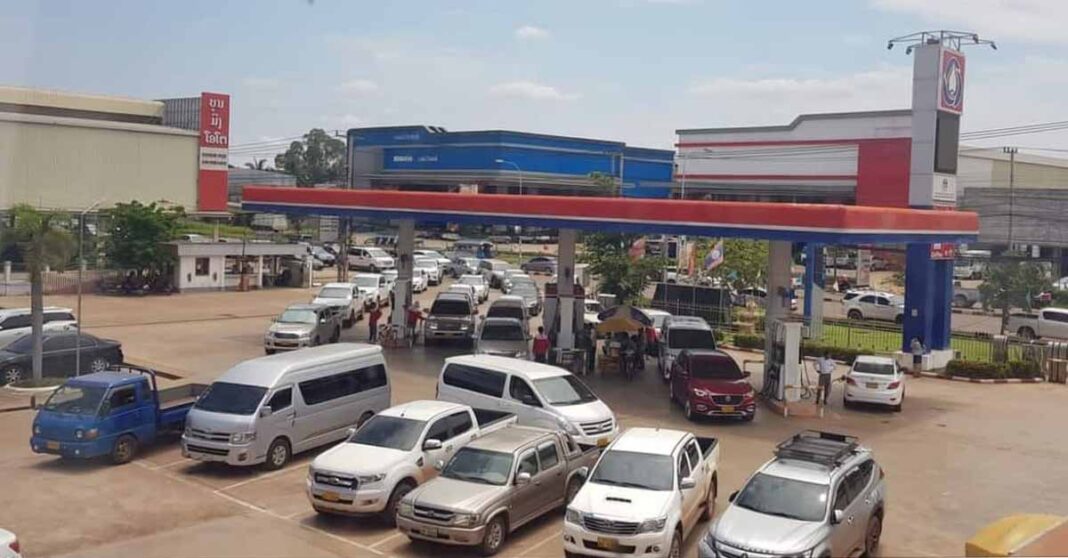Motorists in the nation’s capital queued for hours yesterday in the hope of filling up their tanks before pumps ran dry.
Provinces across the country have been suffering shortages for weeks, with early warning signs as Luang Namtha ran out of fuel in late March. The situation worsened in Pakse and Savannakhet, before finally hitting Vientiane Capital yesterday afternoon.
Long queues stretching out into major roads were witnessed as panicked motorists drove from pump to pump in a desperate attempt to find fuel.
Faced with losses due to the plummeting local currency and a lack of foreign reserves, importers have been unable to continue purchasing fuel.
The #fuelcrisis in #Laos paralyzes Vientiane Capital as queues at the pumps stretch out into major roads. pic.twitter.com/TLB3WLr24e
— The Laotian Times (@LaotianTimes) May 10, 2022
In fact, importers have said that they have only been able to secure twenty percent of the amount of fuel required by the nation.
Reports suggest that Laos needs some 120 million liters of fuel each month, with importers now able to import only around 20 million liters.
According to a letter issued to retailers yesterday by the Lao State Fuel Company, the war in Ukraine coming on the heels of the Covid-19 pandemic has made for unstable global oil markets.
The company regretfully informed its resellers that it had reached a point where it could “no longer meet the demand of its customers.”
The government has made several attempts to resolve the fuel crisis, with the National Assembly agreeing to slash excise taxes on fuels after an emergency meeting yesterday, and the finance ministry attempting to control the exchange rate.
But with rampant inflation, a rapidly depreciating local currency, and no foreign currency reserves, fuel suppliers are unsure how much longer they will be able to continue importing even small amounts.



